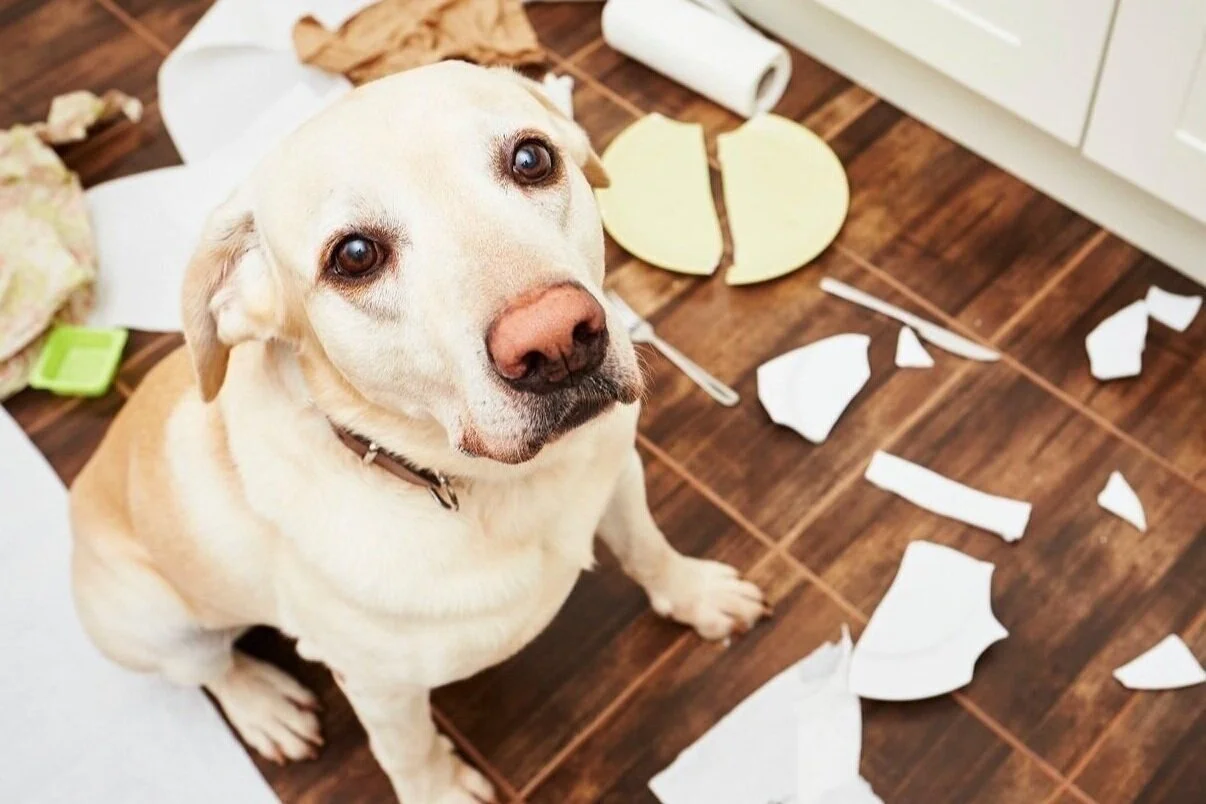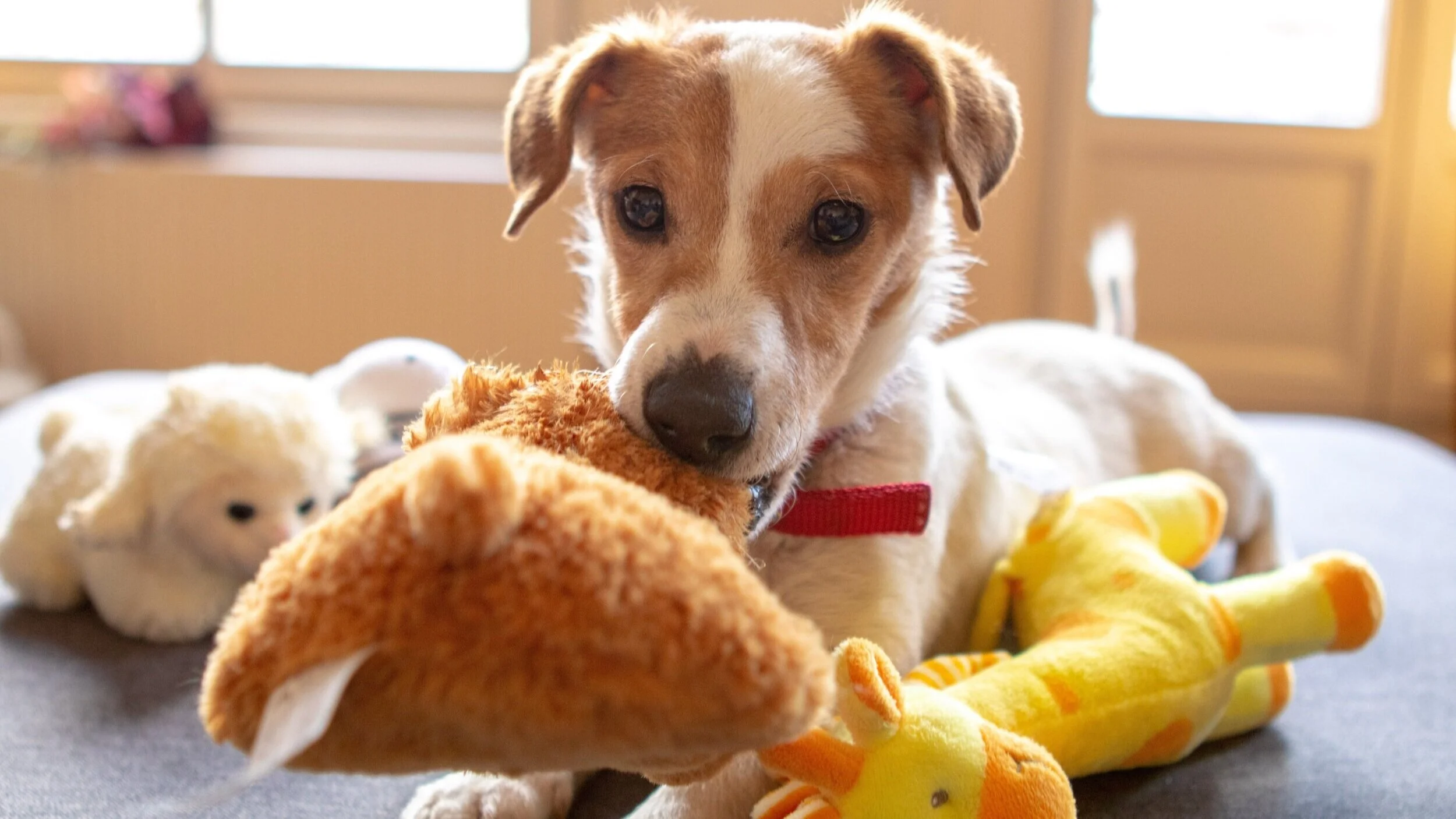Preventing Separation Anxiety In Your Dog Post-Quarantine
The COVID-19 pandemic has forced us indoors at a level unprecedented in modern history, due to real unemployment levels reaching the highest level in the U.S. since 1934, and because nearly half of all the employed U.S. workforce is now working remotely from home.
This has led to a tremendous increase in the time we’ve been spending indoors with our dogs, whether they’re dogs we’ve had forever, or one of the many dogs that are now in homes due to the reported massive upswing in the number of dogs that have been adopted or placed in foster homes across the country since the outbreak.
And now, as states begin to slowly open up their economies, including Colorado, which entered into a “Safer-At-Home” order recently on Monday April 27th, some people are left wondering how this dramatic change will affect their furry best friend.
Specifically, many dog guardians worry that their dog will experience mild to extreme separation anxiety, whether because their dog was already prone to, or have previously exhibited, separation anxiety, or because some of these dogs have never experienced life with their guardian pre-Coronavirus.
Dogs value consistency, predictability and routine, and for some, the changes that will inevitably occur in the home once their human family members return to their previous life (or some version of it), will induce a full-on panic attack (which is, at its core, what separation anxiety is) in them, unless we help prepare them in advance for these changes.
SIGNS OF SEPARATION ANXIETY
As each dog is different, they’ll express separation anxiety in their own unique ways, but there will be some common behaviors to be on the lookout for. Depending on the individual circumstance, some dogs will express only one of these behaviors, while others might express all of them, including:
- Barking
- Howling
- Whining
- Chewing
- Digging
- Escaping
- Pacing
- Destroying
- Accidents
- Scratching
- Overgrooming
- Obsessive Behaviors
- Change in Appetite
- Excessive Drooling or Panting
- Other Stress-Induced Behaviors like Coprophagia
THINGS YOU SHOULD START DOING NOW
Dogs are extremely intelligent, and one of their greatest skills is being able to take in, piece together and comprehend their reality, whether it’s through their nose, their eyes, or their ears, based on our patterns of behavior.
As such, it’s essential to give yourself at least a few weeks to help your dog ease into his new reality/normal, before you anticipate a dramatic change in your own routine and schedule.
CREATING A DESIGNATED SPACE
Making a decision about where your dog will stay, and what they’ll be able to do in your home while you are away is important! Will they have complete free reign inside your home? Or will they be restricted to a room, an area behind a baby gate, or inside a dog crate?
Unless your dog will be absolutely free to roam your home while you’re gone, you should start preparing them now by either creating a designated space for them, or by reintroducing them to a space that you’ve already created for them.
Begin the (re)introduction to their area by pairing it with delicious frozen Kongs and special chews, toys and treats that your dog loves, or has never had before. Ease them into it by spending time nearby while working, and then gradually moving about your home, and eventually, out of sight as your dog becomes more and more comfortable in their designated space.
LEAVING CUES
As mentioned, dogs observe us carefully in order to predict our behavior and their reality. Therefore, the sights, sounds and smells of their humans getting ready to leave can be quite triggering, leaving them anxious about, and fearful of, being left alone.
This is why it's incredibly important to introduce changes in your routine and behavior while you’re still at home.
You can start by thinking about, and taking inventory of, all the cues that you exhibit when you’re getting ready to leave the house. This can include picking up your jacket, your keys, your wallet, and/or your purse/briefcase/backpack. It can also include things such as filling up your travel mug with coffee or even the type of clothing that you’re wearing.
So once your dog has become accustomed to reliably going to, and comfortably staying inside, their designated area, start practicing your leaving cues, without actually leaving your home.
This will get your dog accustomed to your traditional leaving rituals, leaving your dog unable to predict when you are actually going to leave, which will result in a gradual dampening of their conditioned emotional response to those cues.
PRACTICING ABSENCES
Of course, practicing leaving cues is just the first step. You’ll eventually have to start leaving your dog home alone, and gradually extending the amount of time they will have to spend alone in their designated space.
First, check what your dog’s tolerance is for you being gone for any period of time. Then leave for an amount of time that rubs up against that tolerance, but below their threshold of going into panic mode. I would even suggest utilizing a webcam in order to observe your dog and his tolerance for your absence while you're out and about to learn what that threshold precisely is.
Some dogs might panic after the first minute of absence, while others might panic after an hour. The goal here is to introduce absences, and then to normalize longer and longer periods of time spent alone. You can take this time to go on a walk around the block, or even just down the street, at first.
When you return, pay close attention to any indications that your dog experienced separation anxiety, such as signs of stress, self-injury, potty accidents, and/or damage to your property.
Consistency and building up to a routine that most closely resembles your anticipated new work/school schedule is key, so that it’s a routine that has become normalized in your dog’s mind.
DON’T CHANGE YOUR BEHAVIOR TOWARDS YOUR DOG
While you’ll want to gradually get your dog used to the change in your routine, you’ll definitely want to ensure that you’re not treating your dog differently, or withholding affection.
As mentioned, dogs are highly attuned to our changes in behavior, so don’t complicate matters by changing your routine AND your behavior towards your dog, simultaneously.
ENRICHMENT, ENRICHMENT, ENRICHMENT
Just like us, when we experience stress or anxiety, we all have mechanisms, habits, and things we naturally gravitate to to self-soothe. Think about your teddy bear, your thumb, your blanket, etc. when we were young.
In much the same way, we want to teach our dogs to learn how to self-soothe, instead of relying solely on us for entertainment, companionship and comfort. Luckily there are so many products we can utilize and give to our dogs to take their minds off of the stress brought on by your absence, including:
- Food Puzzles
- Interractive Toys
- High-value, Long-lasting Chews & Bones
- Frozen Kongs & Marrow Bones
- Licki Mats
- Snuffle Mats
- Interactive Webcams
- Soothing Music
- CBD Treats
IN SUMMARY
The fact that you’ve read this far indicates that while you’re concerned about how these new changes will affect your dog, you’re also willing to be proactive about how to lessen, or eliminate, these changes that will affect many dogs post quarantine.
Remember that your dog needs your guidance and help on how to get used to and overcome the blues when being left alone after all this time together.
In short, create a plan and start practicing now with the following steps:
- Learn and recognize the signs of separation anxiety
- Create or reintroduce a designated space for your dog
- Take inventory of, and practice, your leaving cues while in the home
- Practice leaving your dog for longer and longer periods of time, and eventually towards a leaving schedule that will mirror your new one
- Provide a plethora of enrichment games, puzzles, chews, toys, etc.
If you and your dog need additional support, please don't hesitate to contact us! You don't have to do this all alone.
For more detailed information about separation anxiety, feel free to check out our latest podcast episode with esteemed dog trainer, author and foremost expert on separation anxiety, Malena DeMartini-Price below!






